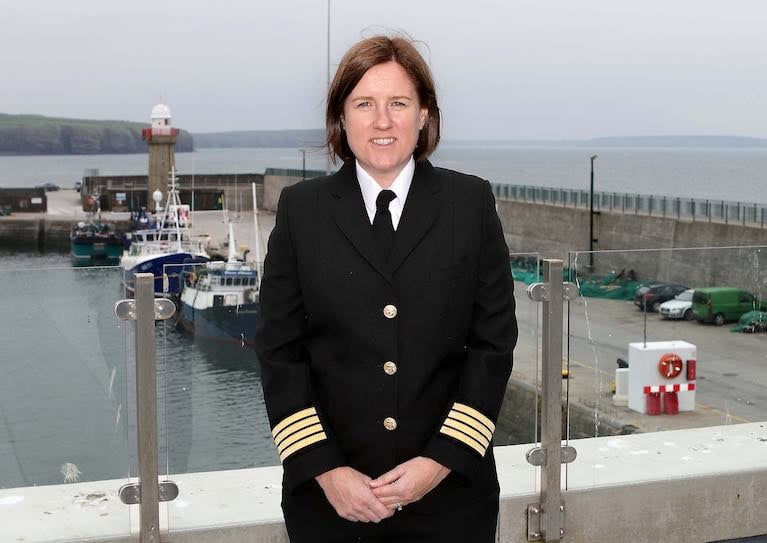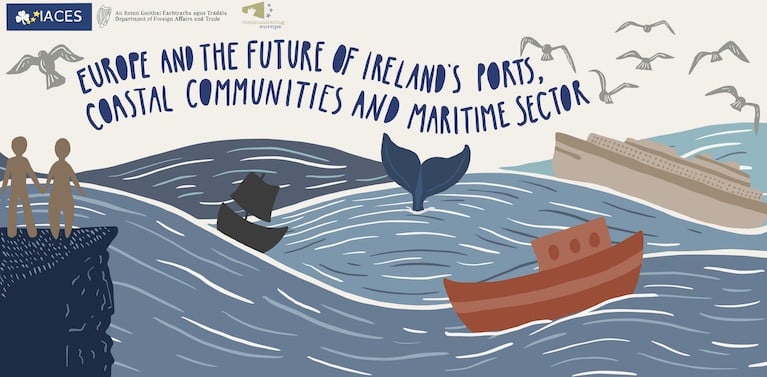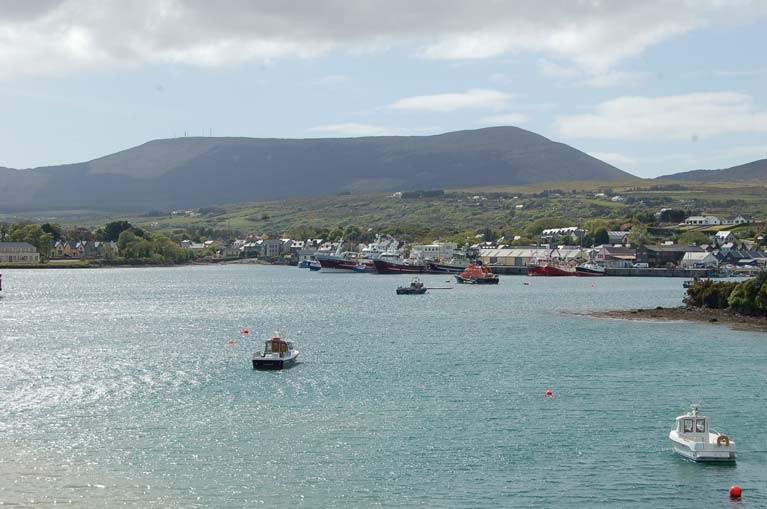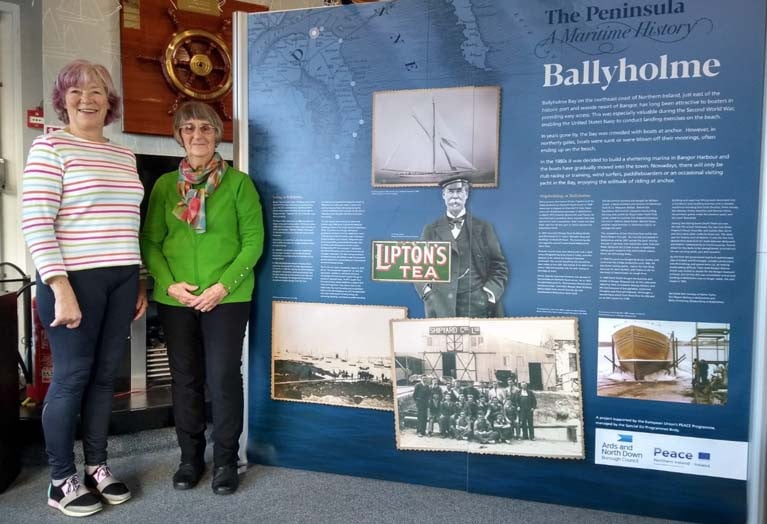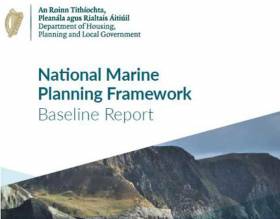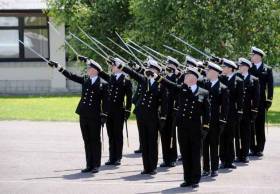Displaying items by tag: maritime
EU Commission Adopts €258 million European Maritime, Fisheries and Aquaculture Fund (EMFAF) Programme 2021-27 for Ireland
Minister for Agriculture, Food and the Marine Charlie McConalogue today welcomed the decision by the EU Commission to adopt the European Maritime, Fisheries and Aquaculture Fund (EMFAF) Programme 2021-27 for Ireland.
“I am pleased to announce that today the EU Commission has adopted the €258 million EMFAF Seafood Development Programme which envisages significant funding in our seafood sector and our coastal communities. These communities have faced extraordinary challenges in recent times, particularly due to Brexit and the Trade and Cooperation Agreement. In 2021, I established the Seafood Task Force to make recommendations to address the challenges arising from these events and I have since announced €225 million in supports utilising the Brexit Adjustment Reserve. This new programme provides for additional, longer term supports to enable our seafood sector to engage in transformational change and for our coastal communities to thrive.”
The EMFAF supports the EU Common Fisheries Policy (CFP), the EU Maritime Policy and the EU agenda for international ocean governance. Building on the European Maritime and Fisheries Fund (EMFF) 2014-2020, it provides supports to achieve food security through the supply of seafood products, growth of a sustainable blue economy and healthy, safe and sustainably managed seas and oceans.
Minister McConalogue in the preparations for the new EMFAF Seafood Development Programme, which runs up to 2027, has secured an increase in overall funding over the previous EMFF programme. The new EMFAF Seafood Development Programme envisages funding up to €258.4 million, which includes a €134 million EU contribution and a Government of Ireland contribution of €116 million.
The EMFAF Programme aims to support a diverse range of activities within the marine area. For fisheries, the Programme will support capital investment on board, capital investment ashore relating to the landing obligation, innovation in fishing gear and methods, technical advice to the fleet, acquisition of first vessel by young fishers, supports to the inshore fleet, training and marketing.
For aquaculture, the Programme will support implementation of the National Strategic Plan for Aquaculture. This will include in particular support for capital investment in aquaculture sites, supports for innovation and research to develop technology and enhance knowledge, advisory services, training and marketing.
For processing, the Programme will support capital investment in seafood processing enterprises, in particular to add value to raw material, enhance energy efficiency, reduce CO2 emissions, and enhance competitiveness. It will also support innovation to develop new products, advisory services, marketing and training.
The Programme will support the socio-economic development and diversification of coastal communities through the seven Fisheries Local Action Groups. This will carry on from the Brexit Blue Economy Enterprise Development Scheme, implemented through the FLAGs over 2022/23, but will also have a broader remit to support community type projects.
The Programme will support Ireland's environmental obligations through a continuation of the EMFF Marine Biodiversity Scheme. This will fund appropriate assessment of fisheries and aquaculture activities, reporting on the Marine Strategy framework Directive, projects in support of the CFP, and species and habitat restoration.
The Programme will support enhancement of Ireland's knowledge of its marine environment, particularly in terms of enhancing knowledge of climate change impacts on fish stocks, habitats and species.
Lastly, the Programme will fund Ireland's compliance with its obligations under the CFP, specifically for fisheries protection and for fisheries management science. Minister McConalogue added:
“The programme has been developed in cooperation with a wide range of stakeholders to ensure we can help our seafood sector and coastal communities to maximise their potential while protecting our marine environment and its rich biodiversity.”
The European Maritime and Fisheries Fund (EMFF) 2014-2020 was established by EU regulation (508/2014). Ireland’s EMFF Programme was adopted in 2015 and was co-funded by the European Union and Government of Ireland. Through this joint funding €240 million was allocated to the programme.
National maritime industry leaders and senior Government officials are to meet in Merseyside for a high-profile summit to discuss the future of the sector in the UK.
Industry body Mersey Maritime is holding its third annual Maritime Exchange conference on Friday, June 25, 2021. Taking place in the magnificent surroundings of a Grade-II-listed Victorian building in Birkenhead docklands, the conference will be a hybrid virtual and in-person event. The Mersey Maritime Exchange will serve as a platform for the maritime sector to come together to review progress on implementing the UK’s flagship national maritime strategy, Maritime 2050.
In the UK, the maritime sector is worth more than £46bn annually and supports more than one million jobs. Liverpool City Region is regarded as one of the most successful maritime clusters in Europe. The local sector contributes more than £4bn in GVA and supports tens of thousands of jobs.
Around 95% of goods coming into the UK arrive by sea and the sector kept this vital supply line of food, medicines and clothing moving during COVID-19. British maritime companies facilitate more than £500bn of global trade each year. It is an industry that is critical to the health of the UK economy.
Mersey Maritime hosted the first Maritime Exchange at Liverpool Town Hall in 2019 and, due to COVID-19 restrictions, took the event online in 2020. Last year’s conference included speeches from Maritime Minister Robert Courts and Sarah Kenny CEO of BMT and Chair of Maritime UK.
The Maritime Exchange was originally conceived in response to the Government’s Maritime 2050 report which set out the future of the sector over the next three decades. At the heart of the report was a commitment to technological transformation, decarbonisation and a more inclusive, highly-trained workforce.
This year’s conference will focus on ‘Maritime 2050: The journey so far?’ and is being delivered with the support of the Department for Transport and Maritime UK. The conference will again explore the Maritime 2050 strategy and its key themes, coming two-and-a-half years into the short-term recommendations and coinciding with the launch of Maritime UK’s detailed: ‘Maritime 2050: Where are we now?’ report. It will also celebrate the Day of the Seafarer 2021.
It is being held in the Grade II-listed 19th century hydraulic tower building, a copy of the Palazzo Vecchio in Florence, close to the Birkenhead waterfront. The building is set to be the centrepiece of the proposed £23m Maritime Knowledge Hub in Wirral Waters.
Chris Shirling-Rooke, Chief Executive of Mersey Maritime, said: “Despite the challenges of the last year, Mersey Maritime has been resolutely focused on supporting the industry in the Liverpool city region and beyond.
“Much of our work has been guided by the principles that sit within the Maritime 2050 report and we are proud to be able to deliver this event to showcase all that has been achieved so far across the sector, together with our UK wide ambitions for the future.
“Significantly, the event will take place at the site of the proposed new Maritime Knowledge Hub in the Birkenhead docks area which is a central part of major regeneration works for the region.
“This maritime centre of excellence is at the heart of our ambition for the future of the industry regionally and will be of national significance. It is fitting that we hold this important event in such a location and underlines the journey that the industry is on at this exciting time as we emerge from the pandemic crisis and respond to be the big challenges facing us.”
The conference will feature a range of key-note speeches and panel discussions, focused around the following themes:
- People
- Innovation
- Environment
- Competitiveness
- Regional Growth
Maritime UK Chair, Sarah Kenny, added: “The UK is emerging from one of the greatest economic shocks in modern times, and as we look to rededicate ourselves to the long-term ambitions set out in the Maritime 2050 strategy, we have the opportunity to consider what the future of the maritime sector should look like.
“As we are approaching the half-way mark for the short-term recommendations in the strategy, we will be taking a moment to celebrate successes, but also to review progress, identify gaps in delivery, and think about what more needs to be done to ensure a sustainable maritime future for all.
“Maritime UK is pleased to be supporting Mersey Maritime and the Department for Transport in the organisation of this event, which will give us the opportunity to discuss key priorities from across a sector so critical to the UK economy.”
In addition to the Mersey Maritime Exchange conference, the Maritime Knowledge Hub site will also host a number of other activities across the day including a VVIP visit to launch the pre-development phase of the project with key partners Wirral Waters, Peel L&P, Wirral Council and Liverpool Combined Authority.
The days’ celebrations will conclude with a drinks reception to announce the finalists of the Mersey Maritime Industry Awards 2021 (MMIA21). The awards ceremony will take place in Liverpool on September 17, 2021 and will feature as the closing event of London International Shipping Week.
For more details on the Mersey Maritime Exchange – Maritime 2050: The journey so far is here
Female Harbour Masters Pursuing Maritime Careers in Ireland - Podcast
Master mariners, meteorologists and marine biologists are some of the professions held by about 160 women working in the Irish maritime sector.
Two mariners, Capt Caitríona Dowling and Capt Deirdre Lane know what it is like to pursue a career in the merchant marine, having met as teenagers on the former sail training ship Asgard II.
Capt Lane is currently harbourmaster in Dunmore East, Co Waterford – a part of the coast she comes from originally.
Capt Dowling latterly worked as harbourmaster in Warrenpoint, Co Down, before being appointed navigation services manager with the Commissioners of Irish Lights (CIL).
 Capt Catriona Dowling, former harbourmaster and now Irish Lights navigation services manager
Capt Catriona Dowling, former harbourmaster and now Irish Lights navigation services manager
The two women were among a number of speakers and participants at last year's conference on empowering women in the marine, held at CIL headquarters in Dun Laoghaire, Co Dublin.
The conference, the first of its type, was hosted by CIL chief executive Yvonne Shields O'Connor to mark world maritime day 2019.
Capt Dowling and Capt Lane spoke to Lorna Siggins for RTÉ Radio Seascapes, and for Wavelengths, the new weekly podcast on news and views from the Irish coast for Afloat.
EU & Ireland's Ports, Coasts & Maritime Sector Conference Announced
During the process of the UK’s withdrawal from the EU, there was, rightly, a great deal of focus in public debate on the issues confronting Ireland’s border communities. On 20 November 2020, the Irish Association for Contemporary European Studies (IACES) will be holding an online conference which aims to expand the terms of this debate, and to examine and deepen understanding of a key issue in Ireland’s relationship with the EU – that of the future of those coastal and port communities which, at the end of the transition period, will find themselves on a new frontier between the EU and the UK.
Bringing together academics, experts and stakeholders, this online conference and workshop aims to explore the key role played by Ireland’s ports, coastal communities and maritime sector in its membership of the EU; provide a forum in which issues confronting Ireland’s port and coastal communities as a result of Brexit, climate change and the coronavirus pandemic can be discussed; and, crucially, highlight how responses to these challenges are framed and influenced by Ireland’s EU membership.
The conference will examine contemporary challenges for Ireland's ports, coasts and maritime sector, explore community projects that cross the maritime border between Ireland and Wales, and examine the long history of Ireland's cultural connections with the sea. Attendance is open to all, and further details and registration are available here.
There is a hidden wealth of literary talent in the North which deserves greater exposure and the book Shaped by the Sea produced by a team of volunteers in the East Antrim area is an excellent example writes Betty Armstrong
With Peace IV funding, a €270m unique initiative of the European Union designed to support peace and reconciliation, local woman Angeline King energised a group of people living in or connected to Larne and its environs, to produce what is a fascinating anthology described as ‘A sample of Larne’s Literary Heritage. That they did it in just eight weeks is a feat in itself.
Angeline had worked in international business for 20 years and decided to become a freelance writer who it is said: “will turn her hand to anything involving words”. She has managed to encourage this diverse group of participants, some of whom had never written before. to produce this 64-page anthology which throws a light of the rich heritage of a part of the country which many would associate with the ferry port of Larne and start of the world-famous Antrim Coast Road. There are stories about the town of Larne as well as Island Magee, Ballygally and Ballylumford.
Among those involved was author, nautical scribe and sailing enthusiast from East Antrim Boat Club, Tom Jobling, well known as a past Irish President of the GP14 International Association. His contribution is the fictional ‘A Leap of Faith’.
The nautically-themed stories, poems, folk tales, memoirs, and songs are interspersed with paintings by local artists Chris Gilbert and Janet Crymble and they give a fascinating insight into the life of people from Larne, Ballygally, and Island Magee area of East Antrim.
‘The Passing of the Old Order’ by Fear Flatha O Gnimh is a fitting introduction to the literature of Larne. The poet’s family (Agnew) were the chief poets for the Gaelic chieftains, the O’Neills and the MacDonalds. The other content depicts subjects ranging from mythical and real people and happenings.
The programme was part of Mid and East Antrim Borough Council’s St.Art project funded through Peace IV.
Maritime Organisations Should Speak Out at Election Time
The first people arrived on the shores of this island some 10,000 years ago… according to history …. but as the Irish people of today listen to the campaigning of those who want to be elected as our rulers - those political hopefuls do not prioritise the maritime sphere and, in national debates on television, radio and in the print media, they have not referred to it.
What does that indicate?
That the marine does not rank as a priority matter, even though it is a vital channel of transport, food supply, energy, communication and leisure. You'll have to dig deep to find political manifesto commitments to maritime affairs.
Afloat has done that for you in its assessment of how the main parties perceive maritime matters. The conclusion reached is that: “This island nation still doesn't have a marine policy or a dedicated marine department. It’s a ship of state without a captain or a rudder.”
This is despite some commitments, such as ‘harnessing our ocean wealth..” though that seems to have stalled somewhat.
I actually like the fact that politicians and political parties, even Government Ministers and leaders of industry refer these days to “this island nation” a phrase I can claim some justification for promoting during my years of broadcasting, but I'm getting very fed up with politicians, government and all political parties in this General Election for their attitude towards the marine sphere.
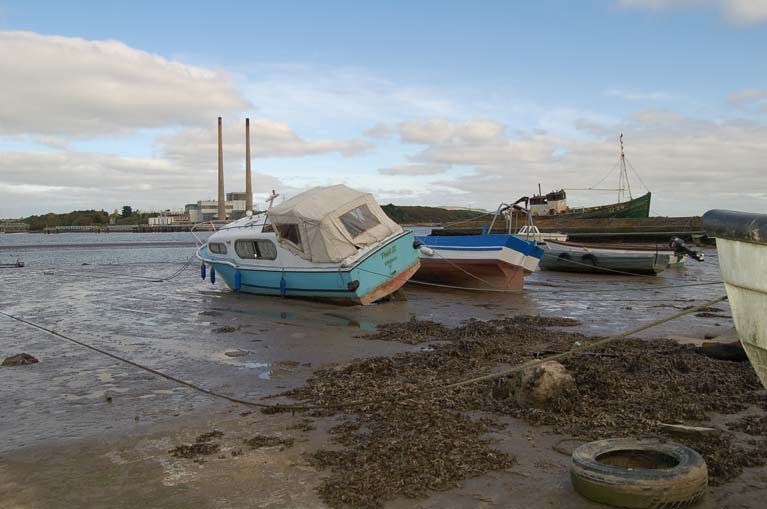 Is it because of lacking an outspoken approach that the maritime sphere is neglected?
Is it because of lacking an outspoken approach that the maritime sphere is neglected?
The third biggest country in Europe, by virtue of our seabed territory of 220 million acres, as I’ve often heard quoted, but as fishermen will tell you, most of that was given away by the Government. That was put well this week by John Nolan, 37 years in the fishing industry and Managing Director of Castletowbere Fishermen’s Co-op, when he said Ireland was wronged, robbed of this huge economic resource and he blames politicians and the Civil Service administration.
The Irish Islands Council – Comhdhail Oilean na hEireann and fishing organisations – have called on election candidates to publicly pledge commitment to the offshore islands and to the fishing industry… but I haven’t heard a single other maritime organisation make any calls, nor speak out as strongly as John Nolan has done…. Is it any wonder then that successive governments got away with removing a dedicated marine department in an island nation and dividing the marine sphere into the responsibilities of six Departments… That was a divide and conquer policy motivated by civil service advice, I was told. It certainly removed a maritime focus at the Cabinet table.
But while politicians can generally be berated for their lack of maritime interest – the maritime sphere – all of it – perhaps needs to look at itself – and to speak out the maritime sector more loudly….
More on the podcast below.
Intriguing Northern Ireland Maritime Heritages Go on Display
In a unique opportunity to portray the intriguing maritime heritage of the Ards Peninsula and North Down in Northern Ireland, seven communities have produced a maritime history of each of their locations – Portaferry, Portavogie, Ballyhalbert and Cloughey on the Ards Peninsula and Donaghadee, Groomsport and Ballyholme on the North Down coast.
The project is supported by the EU’s PEACE IV Programme, managed by the SEUPB (Special EU Programmes Body). This is an initiative of the European Union which has been designed to support peace and reconciliation in Northern Ireland and the Border Region of Ireland. It provides support to projects that contribute towards the promotion of greater levels of peace and reconciliation. The Programme also places a strong emphasis on promoting cross-community relations and understanding in order to create a more cohesive society.
Ards and North Down Borough Council was awarded £3.3M from the European Union’s PEACE IV Programme to deliver the PEACE IV Action Plan and a total of 19 projects are being rolled out across the Borough.
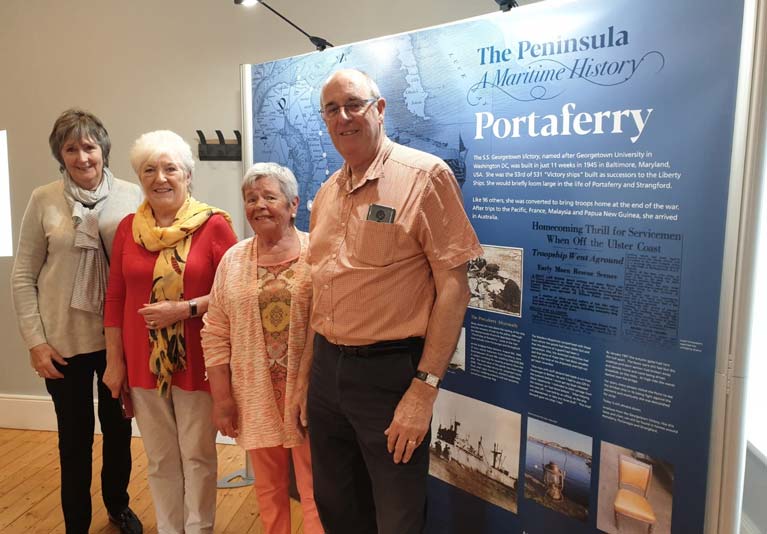 The Portaferry panel
The Portaferry panel
One of these projects involves a programme which engages communities across the Borough to explore jointly their shared maritime history and develop connections linked to what each community has in common thus creating more cohesive communities. The project will improve cross-community cohesion between groups, particularly in rural towns and villages by jointly exploring their shared history and heritage.
Each of the seven communities has produced a large display panel telling stories, illustrated with photographs, of important people, shipwrecks, businesses, tales of bravery and memorable history particular to each location. The aim is to make available this information in the form of a travelling exhibition, online material, touch screen access and eventually an App telling the same stories. The panels are the property of each community to be also used as they think fit.
Pulling this together is Copius Consulting, a Belfast based company who have facilitated the programme implementation as a delivery agent commissioned by Ards and North Down Borough Council Peace IV Programme.
Match-funding has been provided by the Executive Office in Northern Ireland and the Department of Rural and Community Development in Ireland.
First-Ever National Maritime Plan Should Not Be Ignored
Hello and welcome to my weekly Podcast …. Tom MacSweeney here ….
The marine sector is about to be planned for the first time. This is the development of Ireland’s first national marine spatial plan, about which a public consultation process has been underway at a series of meetings around the country. A 108-page Baseline Report charts thinking at government level.
It lists sailing as the most popular marine sport in terms of “membership numbers” with over 19,000 members in 60 clubs and says Ireland is a world-class sailing destination. It also lists challenges to watersports – pressures from increased numbers engaged in watersports in environmentally sensitive areas, noise pollution from power boats and jet skis and the dangers of introducing non-native species into areas from recreational boats.
"It lists sailing as the most popular marine sport in terms of “membership numbers” with over 19,000 members in 60 clubs"
The introduction says: ““As an island nation with one of the largest marine areas in Europe, Ireland’s economy, culture and society are inextricably linked with the sea.”
Having pioneered the words “island nation” to create public awareness in the sea for many years, I like that! The aim is to bring the planning process from shore to sea, to create a national plan for Irish territorial waters for a 20-year period.
But public awareness of the drafting of a national plan is not as strong as it should be, in my view. The national media has not given it a lot of attention, compared to planning on land. No surprise there as not a single national newspaper gives dedicated space to marine matters.
I chaired last Friday’s consultation meeting in Cork, which had an attendance of about 120 from a wide sphere of marine interests. Chairing a question-and-answer session with a panel that included those who will be drafting the final plan and its objectives, it became clear that there is a lot of frustration amongst maritime groups about marine planning for the maritime sector and that so many aspects of it are spread across several government departments, which divides and lessens its impact at governmental level.
It’s six years since the Harnessing Our Ocean Wealth was launched, so it’s taken some time to start work on this planning process. I wanted to know why the Department of the Marine was not leading the process and interviewed Philip Nugent for this week’s Podcast. I asked him to explain exactly what it is.
Submissions about the plan can be made until noon on Friday, December 14 by Email to: [email protected] or by writing to: MSP Submissions, Marine Spatial Planning Section, Department of Housing, Planning and Local Government, Newtown Road, Wexford Y35 AP90. The Baseline Report is publicly available.
Where is the Dept of Marine? Why Tom MacSweeney is Disgusted by Government’s Maritime Ignorance
I am not a convinced believer in Government marine policy. Though I accept there have been improvements in the State attitude towards the maritime sphere in recent years, there is still a big defect – marine policy is not a high priority with the Government.
Because of that, there is no dedicated Department of the Marine, in an island nation that is 95 per cent dependent on the sea for everything moved into and from this country.
Successive governments have never given the maritime sphere high priority and that continues today. They have not appreciated the economic value of the marine, an unforgivable blindness in a nation that is the most western of the European Union. So the economic value of our rich fishing waters has been reaped, not by Ireland, but by other European nations, in several of which Irish holidaymakers this Summer will eat fish which they will be unaware has come from their home waters, where Irish boats are reduced to minimal catches compared with foreign vessels – and that because of Irish Government failure. It is only in current years that the value of marine tourism has been realised and that, not because of Government but through the pressure of independent operators.
"There is no dedicated Department of the Marine, in an island nation that is 95 per cent dependent on the sea for everything moved into and from this country"
So this week I was pretty disgusted when the Government ignored the United Nations request to honour the ‘World Day of the Seafarer,’ honouring the “vital importance to the world’s population and its economic well-being, of the role of seafarers in our lives.” The International Maritime Organisation, the maritime agency of the UN, asked every nation to mark the ‘Day of the Seafarer.’ Ireland is one of the nations which are members of the IMO, but did nothing. This island nation, which depends on 95 per cent of its exports and imports on shipping, ignored the role of the seafarer. To those of us who have long experience of government marine policy, no surprise there.
SEAFEST & OCEAN WEALTH
But it came also at the start of a week which will end with Seafest in Galway, the annual official State event which declares that “Ireland’s multi-billion Euro marine economy is the focus of ocean wealth.
Quite a contradiction in Governmental approach there, but I agree with Marine Institute CEO Peter Heffernan when he says that “Ireland’s oceans represent enormous commercial opportunities.”
The Summit is an output of Harnessing Our Ocean Wealth, the Government’s integrated plan for Ireland’s marine sector, ‘Harnessing Our Ocean Wealth,’ which aims to double the value of the marine economy’s contribution to GDP by 2030.
While marine research has increased exponentially, I remain questioning of Government commitment, such as to the future of the Naval Service at its island base in Cork Harbour where Haulbowline Island has been a naval centre since the 1600s. This is now to be reviewed and that is to suit commercial pressure. The Indaver company wants to build a hazardous waste incinerator at the doorstep of the base, the only road into and from the island. It has planning approval, despite objections by the Department of Defence, which told a planning enquiry that it would have an “unacceptable impact “on Naval operations damaging to the national strategic defence.”
Amazingly, Bord Pleanala’s Inspector said it wouldn’t…. so appearing to know more about Naval operations than the Navy themselves….. Even though he rejected the proposed incinerator on other grounds, the board of Bord Pleanala over-ruled him and cited his comment on the Navy as one of the reasons…..
So now, it seems, civilians can make national maritime defence policy...
Defence Junior Minister Paul Kehoe, the Taoiseach is the senior man, has told his Department to review the impact of the incinerator on Naval policy, but they’ve already made their view known… so what is going on here….?
As the great maritime commentator, Dr.John De Courcy Ireland said: “The ruling politicians of this country turned their backs to the sea.”
NAVAL SHIPS TO BE BASED IN DUN LAOGHAIRE & KILLYBEGS?
I have been told this week that Killybegs in Donegal and Dun Laoghaire, a harbour now without ferry services on the Dublin coastline and in need of business, will be considered as alternative locations to base Naval vessels.
What does all this mean for the future of the Haulbowline Naval Base?
There is widespread opposition throughout Cork Harbour communities, larger than anything seen before, against Indaver and its incinerator and demands have been made for investigations into Bord Pleanala
The George Bernard Shaw, 4th Offshore Patrol Vessel to be built in recent years for the Navy is alongside Newquay Dock in Appledore, Devon at present, where fitting-out is underway with sea trials due next month. A 76mm gun is to be fitted and it is planned to formally name and commission her into the Naval Service later this year. By then, perhaps we will know future plans for the Haulbowline Naval Base.
Anyway, the other positive maritime event this week is the start of the Round Ireland Race from Wicklow on Saturday afternoon…. And that doesn’t depend upon Government maritime policy.
Listen to my Podcast here
Reasons to be Positive About Maritime Heritage
The President of the Maritime Institute which runs the National Maritime Museum at Dun Laoghaire has said that “there are more reasons than ever to be positive about maritime heritage.”
Richard McCormick cites the 200-year-celebration of “Dun Laoghaire Harbour’s proud maritime tradition,” the Port Trail Initiative by Dublin Port, the commemoration of the SS Hare and SS Adelia by the erection of memorial plaques which “showed that the close-knit communities of Dublin’s docklands commendably have not forgotten their heritage” and the ‘Friend and Foe 1917 Maritime Heritage Weekend’ held in Dunmore East, Co.Waterford, as examples.
He refers to these and others in his President’s Address published in the Autumn edition of the Institute’s Newsletter, prior to the annual general meeting of the Institute which will be held next weekend. He outlines the progress made at the Museum in developing its facilities and praises the staff and volunteers for “magnificent work in keeping the Museum open seven days a week, offering an interesting and attractive environment for visitors to explore Ireland’s rich maritime heritage.”





























